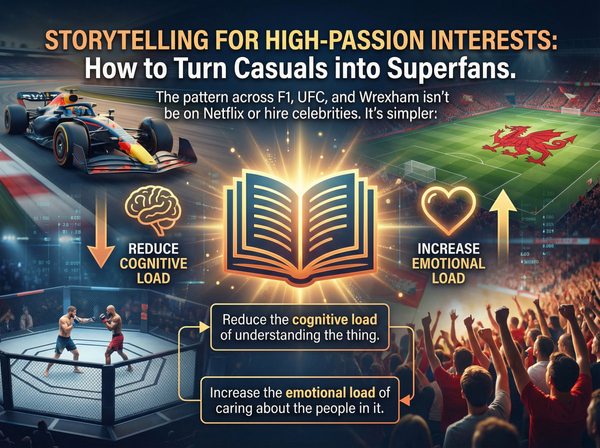Your Guide to E-commerce Email Pop-ups
While social media and advertising have their place, the humble email address remains one of the most powerful tools for nurturing leads, building loyalty, and driving sales.
And one of the most effective ways to capture those all-important email addresses? Well-executed pop-ups.
Gone are the days of universally despised, intrusive pop-ups. Modern e-commerce pop-ups, when designed strategically and offering genuine value, can be a highly effective way to convert visitors into valuable subscribers.
This guide will walk you through creating pop-ups that not only capture emails but also enhance the user experience and boost your bottom line.
Why Email Capture is Crucial for Your E-commerce Store
Imagine a potential customer landing on your site, Browse for a bit, and then leaving without a trace. Without capturing their email address, you've lost the opportunity to re-engage them, inform them about new products, promotions, or simply remind them about your brand.
Building an email list allows you to:
- Directly communicate with interested leads: Unlike social media algorithms, email gives you a direct line to your audience.
- Drive repeat purchases: Targeted email campaigns can bring customers back to your store.
- Build customer loyalty: Share valuable content, early access to sales, and exclusive offers to foster a sense of community.
- Gather valuable insights: Understand your subscribers' preferences and behaviors to personalize their shopping experience.
Crafting Irresistible Offers: Beyond the Generic Discount
The key to a successful email capture pop-up lies in the offer. What are you giving visitors in exchange for their email address?
A generic "Subscribe to our newsletter" often isn't enough. You need to provide a compelling incentive.
Here are some effective offer types:
- Percentage Off Discount: A classic for a reason. Offering a percentage off their first order (e.g., 10% or 15%) can be a strong motivator for new visitors considering a purchase. It directly reduces the cost and encourages them to take the next step.
- Example Offer: "Get 10% off your purchase"
- Entry into a Giveaway or Contest: This can generate excitement and a high volume of sign-ups, though the quality of leads might vary. Ensure the prize is highly relevant to your products.
- Example Offer: "Win a [Your Product Name]! Enter our monthly giveaway by subscribing."
- Exclusive Content or Resource: If you sell products that require some explanation or have a learning curve, offering a free guide, e-book, or checklist can be incredibly valuable. This positions you as an expert and provides genuine value upfront.
- Example Offer: "Download our Free Guide to [Relevant Topic]."
- The Power of the Free Product: This is where you can leverage the psychological principle of loss aversion. Instead of offering a discount that still requires the customer to spend money, a free product feels like a pure gain. People are often more motivated to avoid losing something (the opportunity to get a free product) than to gain something of equivalent value (a discount on a purchase they still have to make). This can feel less risky to the potential subscriber.
- Example Offer: "Get a Free [Product Name]."
When choosing your offer, consider your target audience, the profitability of the offer, and how well it aligns with your brand and products.
Introducing Urgency: The Timed Offer
To encourage immediate action and prevent visitors from closing the pop-up with the intention to sign up later (and then forgetting), introduce a sense of urgency with a timer. A visible countdown clock can create a "fear of missing out" (FOMO) and prompt visitors to enter their email address before the offer expires.
- How to implement a timer:
- Clearly display a countdown timer within the pop-up.
- Specify the duration of the offer (e.g., "Expires in 30 seconds").
- Ensure the timer is prominent and easy to read.
- Example Offer Text with Timer:
- Get Free [Product Name]. Offer ends in: [Countdown Timer]"
Important Considerations for Using Timers:
- Be Authentic: The timer should represent a genuine limited-time offer. Don't reset the timer every time the visitor lands on the page, as this erodes trust.
- Pair with a Strong Call to Action: The button text should clearly tell the user what action to take to get the offer within the time limit (e.g., "Claim Your Discount Now," "Get My Free Product").
Designing Effective Pop-ups: Best Practices
Beyond the offer and the timer, the design and implementation of your pop-up significantly impact its success.
- Timing is Key: Don't show the pop-up immediately upon arrival. Allow visitors some time to browse your site first. Consider triggering pop-ups based on:
- Time on page: After a visitor has spent a certain amount of time on a page.
- Scroll depth: When a visitor has scrolled a certain percentage down a page.
- Exit intent: When a visitor's mouse movement suggests they are about to leave the page. This is a powerful tactic for capturing abandoning visitors.
- Keep it Simple: The pop-up should be easy to understand and navigate. Limit the number of form fields – typically just an email address is sufficient for the initial capture.
- Mobile Responsiveness: Ensure your pop-ups are optimized for mobile devices and don't negatively impact the mobile Browse experience. Google penalizes intrusive mobile interstitials.
- Clear Call to Action (CTA): The button to submit the email address should be prominent, use action-oriented language, and stand out visually.
- Easy to Close: Always provide a clear and easily clickable "close" button (the "X") so users who are not interested can dismiss the pop-up without frustration.
- Brand Consistency: The pop-up's design (colors, fonts, imagery) should align with your brand's overall aesthetic.
- Don't Overdo It: Avoid bombarding visitors with multiple pop-ups. Use them strategically and consider implementing rules so users who have already subscribed or seen a specific pop-up don't see it again immediately.
Measuring and Optimizing Your Pop-ups
Once your pop-ups are live, it's crucial to track their performance and make data-driven improvements.
- Track Conversion Rates: Monitor how many visitors see your pop-up and how many successfully subscribe.
- A/B Test Different Elements: Experiment with different offers, headlines, copy, designs, timing, and timer durations to see what performs best.
- Monitor Bounce Rates: Ensure your pop-ups are not causing a significant increase in bounce rates on the pages where they appear.
- Gather User Feedback: If possible, collect feedback from users regarding their pop-up experience.
Conclusion
Email pop-ups, when implemented thoughtfully and strategically, can be a highly effective tool for growing your e-commerce email list.
By offering compelling incentives, leveraging psychological principles like loss aversion with free product offers, incorporating urgency with timers, and following best design practices, you can convert more of your website visitors into valuable subscribers, paving the way for increased engagement, loyalty, and ultimately, more sales.
Keep Crushing!
- Sales Guy

